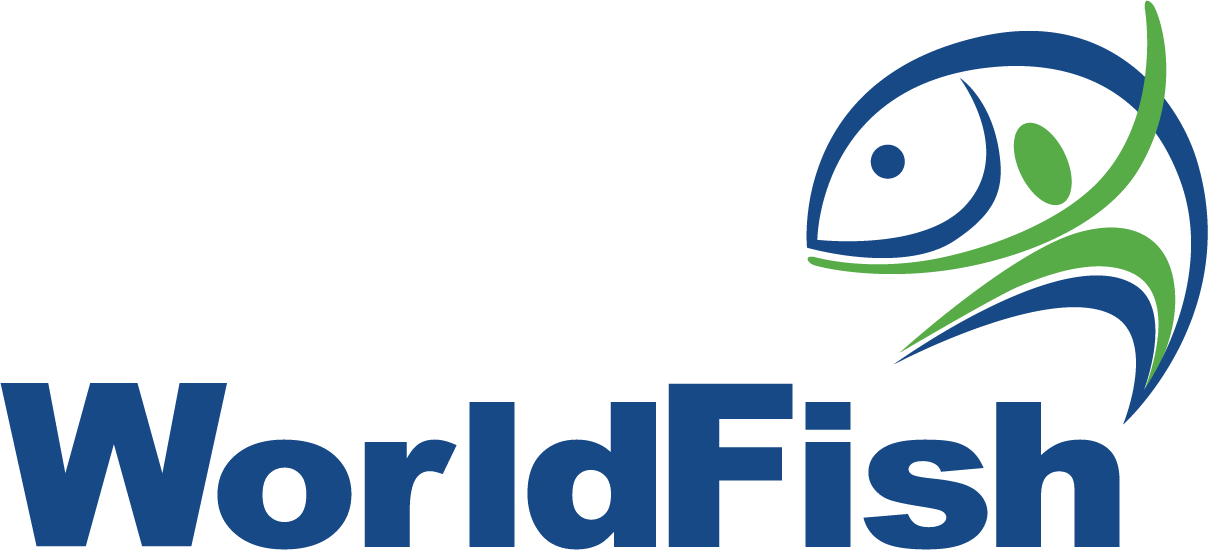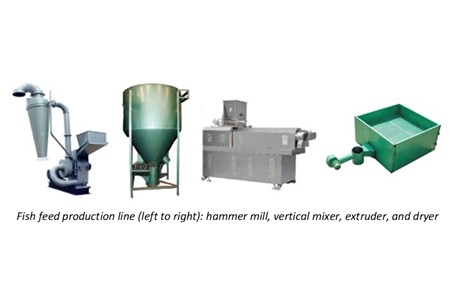Formulation and Pelleting of Low-Cost Feeds
Summary
Aquaculture production in Sub-Saharan Africa is constrained by the high price of suitable fish feeds. Between 60% and 70% of operating expenses by fish farmers go to feed input because their ingredients are either imported or blended overseas. For this reason, formulation, and manufacturing of affordable fish feed in Africa is an integral part of creating more profitable fish farming business. Feed producers need to understand which ingredients and processes provide expected results to fish producers. Supply of low-cost fish feed can be promoted by the combination of locally grown crop and animal products and through the application of available extrusion and pelleting technologies. Compared to simple ingredients such as unprocessed grains, pelleted fish feed is more stable in water, improving nutrient transfer and reducing pollution. Pellets are also easier to store, package and transport, and their buoyancy can be crafted to suit the feeding requirements of different species. Pelleting has a modest investment requirement that provides quick returns, making it an attractive business venture.
About the Solution
A nutritionally balanced and adequate diet are important factors that maximize fish production and profitability, particularly as fish production systems intensify. The main objectives of formulations for aquaculture are to meet dietary requirements, particularly the relatively high need for crude protein, to minimize production and delivery costs, and reduce waste and pollution in ponds. Judicious selection of feed ingredients based on availability, price, and the quality of the nutrients is key in the process. Pelleted feeds can be manufactured through two processing technologies: dry-type extrusion which operates on friction to generate heat, and wet-type extrusion which utilizes drying as a binding process. State-of the-art extrusion combines raw materials under conditions of high temperature, moisture and pressure that results in partial gelatinization and deactivation of anti-nutritional elements. It also sterilizes pathogens, increases digestibility, and shapes pellets into different sizes. The buoyancy and stability of pellets in water allows producers to better monitor and regulate feeding behaviors.
Pelleted feeds are suitable for all types of farmed fish and are customized to match different species and their growth stages. Specific formulations are recommended for omnivorous species like tilapia, carp and trout, and carnivorous species like catfish and perch. Feeding habits are matched to feed properties: floating pellets are used for surface feeders like tilapia and carp and sinking pellets for bottom feeders like catfish and perch. Temperatures, moisture, and pressure in the extrusion process further adjust feed properties.
Feed formulations are composed of ground ingredients in varying proportions to meet nutritional requirements of a particular fish. The common raw materials for omnivorous tilapia include wheat bran, soybean cake, fish meal and maize. For carnivorous catfish, the main ingredients are soybean meal, fish meal, rice, wheat bran and bone meal. When feedstuffs for the desired nutrient composition have been selected, they can be prepared through a process of milling, mixing, and pelleting. Oil may be added to improve buoyancy for floating feed.
The most important consideration in manufacturing pelleted fish feeds is the use of quality feed ingredients that are locally sourced and competitively priced. In feed formulation, the upper limits of toxins and lower limits of substances that influence palatability and water stability must be considered. The first step in the production process is grinding raw materials with a hammer mill into a fine powder. Smaller particle sizes have greater digestibility, cohesiveness, and water stability. Materials should be sun or oven dried before grinding. Different ingredients must have a uniform size. The second step in the process is mixing the ingredients and can be homogenized by hand to form a mash before wet extrusion. A mechanical mixer can be used for large-scale feed production. If cereals in the formula are not adequate to bind the particles of the feed mixture, cassava starch or a similar product can be added as a binder. Just before extrusion, the raw materials are moistened so that they adhere. Wet-type steam pelletizers gelatinize starch which further improves nutritional value. For most adult fish, the diameter of pellets should be at least 4 millimeters.
Commercialization
Commercially available
Solution Images
Institutions



